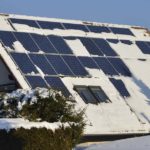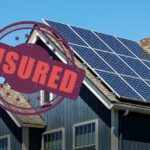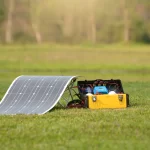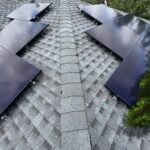Hurricanes are powerful natural disasters that can wreak havoc on buildings and destroy infrastructures causing economic and personal losses. For solar panels, the biggest risk during hurricane season is the soaring wind velocity of about 160 miles per hour. This speed can eventually uproot the panels from your rooftop or worse can cause breakage due to flying debris, rendering them useless. Panels can get damaged badly in Hurricane season. To reduce the impact of hurricanes on solar panels proper precautionary measures need to be taken into account.
Get a FREE Quote for your solar savings if you haven’t gone solar yet with our solar calculator!
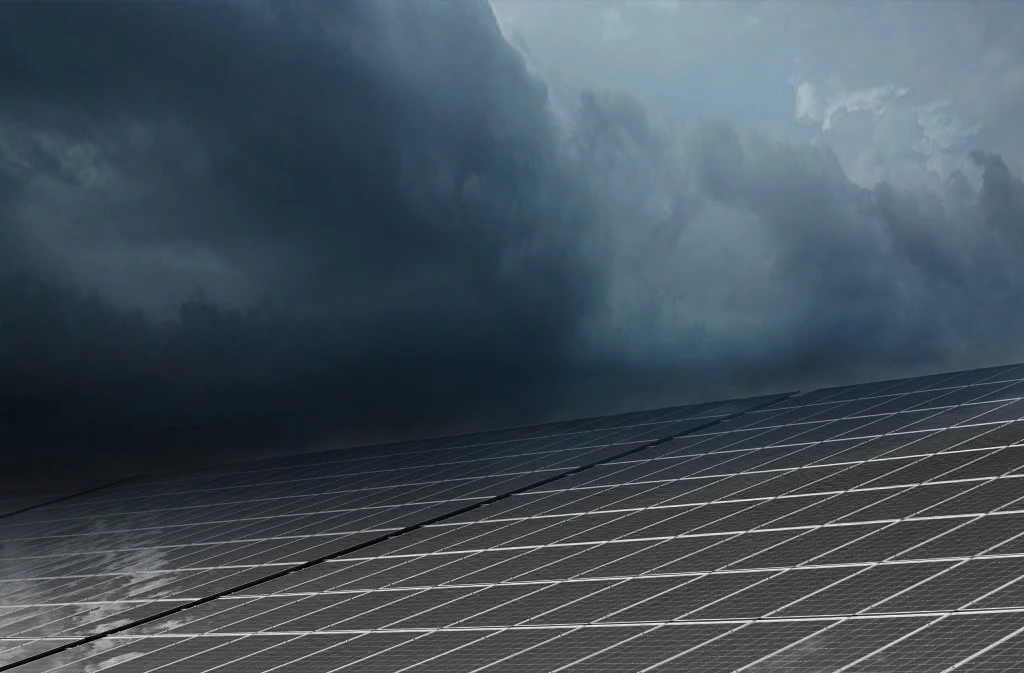
If you live in a hurricane-ridden area, it is natural to worry about extreme weather conditions. Solar investment is not inexpensive and knowing whether your precious financing will likely survive the storm or not is the thought everybody can have. However, these days’ PV modules are built to withstand high wind velocities to make bad weather conditions less risky. To avoid the uprooting of panels, the utilization of bolts to securely attach panels to the rafters is pretty common. In case you need extra surety regarding your panels, you can consult with your solar installer. They will take precautionary measures to ensure the security of your solar system during hurricane season. There are also certain steps that homeowners can take in order to safeguard their modules from hurricanes.
What are the Impacts of Hurricanes on Solar Panels?
Solar panels are put to test under harsh weather conditions. This is to certify that inclement weather conditions like hail, snow, storms, and hurricanes have little to no impact on the solar panel’s performance. National Renewable Energy Laboratory (NREL) took 3,000 solar panels to the testing facility. Panels testing usually takes place at 2,400 Pascals wind velocity. This roughly translates into 140 miles per hour (MPH). Among them, only one panel was observed to be affected by the bad weather. This depicts the sturdy nature of the PV module.
Furthermore, the NREL study shows that, out of 50,000 solar installations that took place between 2009-2013, only 0.1% of PV modules were subject to damage and faulty performance. In the same way, NREL 2020 study “Solar Photovoltaics in Severe Weather” proves that solar panels can cope with strident weather patterns with little to no damage.
What are the requirements of a municipality for the safety of solar Panels?
Florida and Texas are the two states that have to withstand jarring weather calamities. The state government of both states has done a great job in passing out rules and regulations to ascertain the protection of solar panels.
In Florida, the maximum wind speed that solar panels have to withstand during hurricanes is about 160 miles per hour (MPH). So solar installations need to be secure around this estimation. While in Texas, Houston, Hurricane Harvey (category 3 storm) was the major storm that caused massive destruction in terms of infrastructure. The wind speed of Hurricane Harvey was almost 110 MPH. Thus to avoid such situations, the installation of solar panels needs to take place around 110 MPH. There are certain types of PV modules, but the less the price the less will be the panel’s durability. In the same way, thin film panels are more resistant to wind velocity as compared to monocrystalline and polycrystalline modules. Hence, reducing the impact of hurricanes on solar panels.
Solar panel manufacturers pass panels through rigorous testing to ensure that they can bear hailstorms. The checking and accreditation of solar panels are done to ensure that they can withstand hail up to 25 mm (one inch) falling at a speed of 23 meters per second (approximately 50 miles per hour).
What is Uplift?
Solar system placement on your rooftop leaves a little space between the panel and your rooftop. This gives the wind a gateway to blow the panels out of your rooftop. This phenomenon is known as the “uplift”. To stop this from happening, the panels are secured using large lag bolts. These bolts can secure solar arrays directly to the roof beams, making them resilient against the upliftment force. Afterward, this bond is secured using Flashing. Flashing will not only help in further securing the bond but also make the module water-resistant during hurricanes. Solar panels have usually glass and aluminum casings which eventually protect them from weather calamities like rain, hail, snow, and flood. Thus, reducing the impact of hurricanes on solar panels.
Do solar panels stand against hurricanes in reality?
There are many examples in which solar panel systems were able to bear hurricanes. Some of the major examples are as follows:
1. Hurricane Sandy:
When Hurricane Sandy hit New Jersey in 2012, the solar installer reported that only 200 panels had suffered a minor casting problem due to flooding. Conversely, only large solar panel systems were dealing with the problem of damage. This demonstrates how little impact hurricanes have on solar panels’ performance.
2. Hurricane Maria:
When Hurricane Maria’s hit Puerto Rico in 2017, even at a wind speed of 180 MPH, solar panels remain operational at 100% capacity. The PV module with a capacity of 645 kW at the VA hospital in San Juan remained functional throughout the storm. The flexible racking and anchoring systems had kept the solar panels in place. This represents the resilience and durability of the solar system in extreme weather conditions.
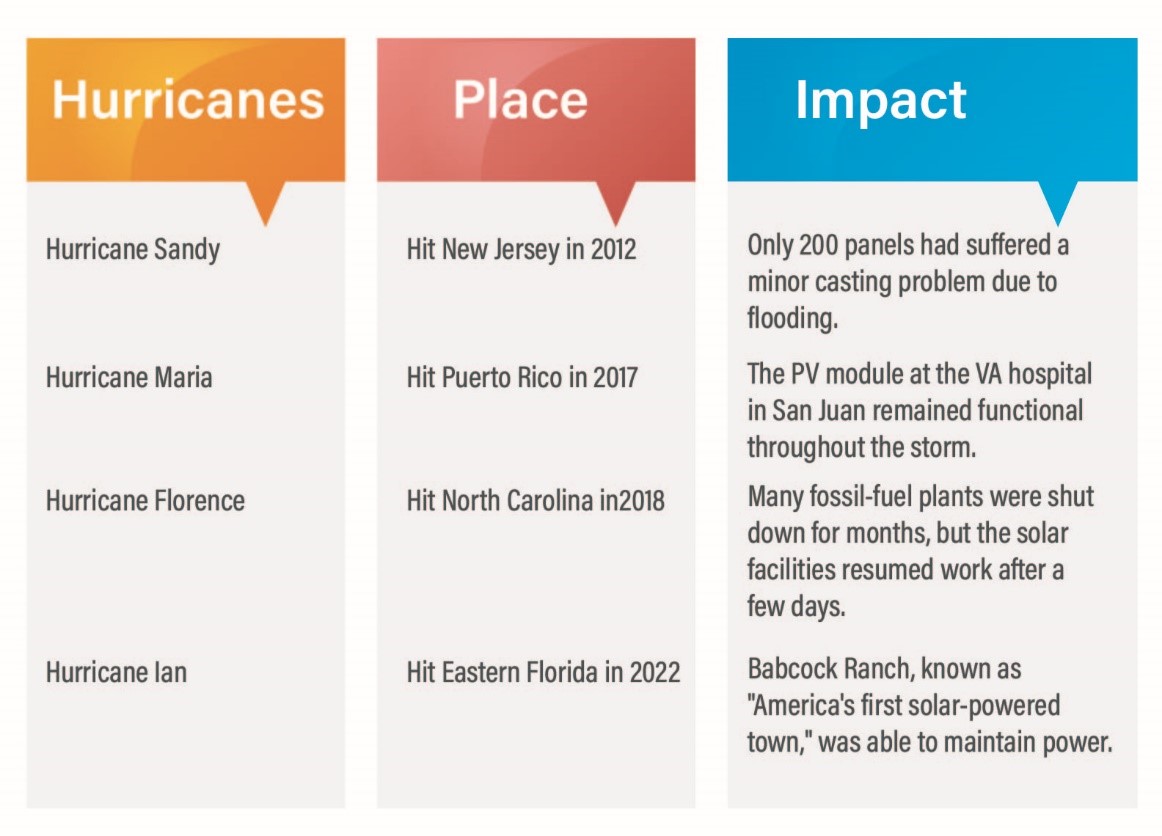
3. Hurricane Florence:
The state of North Carolina was devastated by flooding when Hurricane Florence hit in 2018. Many fossil-fuel plants have to shut down for months, but the solar power facilities were able to resume their work after a few days. This shows the, particularly in disaster-prone areas.
4. Hurricane Ian:
Despite Hurricane Ian’s passage through Eastern Florida in 2022, Babcock Ranch, known as “America’s first solar-powered town,” was able to maintain power. This depicts the effectiveness of PV modules as an energy source.
What role can solar installation companies play in the preparation for hurricanes?
The expertise of the solar installation company can prove beneficial in preparation for the Hurricane as they can assist with what panels should be installed in accordance with the current weather patterns.
1. Roof Location:
An expert solar installer can help to identify the best place on your rooftop for installation. A suitable place is an area where panels can maximize solar energy production but also be less impacted by hurricanes. Make sure your solar system installation takes place away from your rooftop edge. Ask your installer for the lag bolts to certify the security of your solar systems
2. Roof Condition:
In case your home has an old rooftop, then it can potentially damage your modules. A good solar installer like Solar SME can advise you to change your rooftop before solar array installation. In this way, your roof will not only be able to endure the weight of solar panels but also the impact of hurricanes.
3. Building Codes:
Areas that deal with hurricanes, storms, and floods have rules and regulations set for solar installations. This is to ensure the safety of panels and also the security of the surrounding environment. To finalize the installations in the area, the installers must fulfill the area-defined policies and guidelines. Once they get those guidelines correct, it hardly ever happens that solar panel systems have enticed damage.
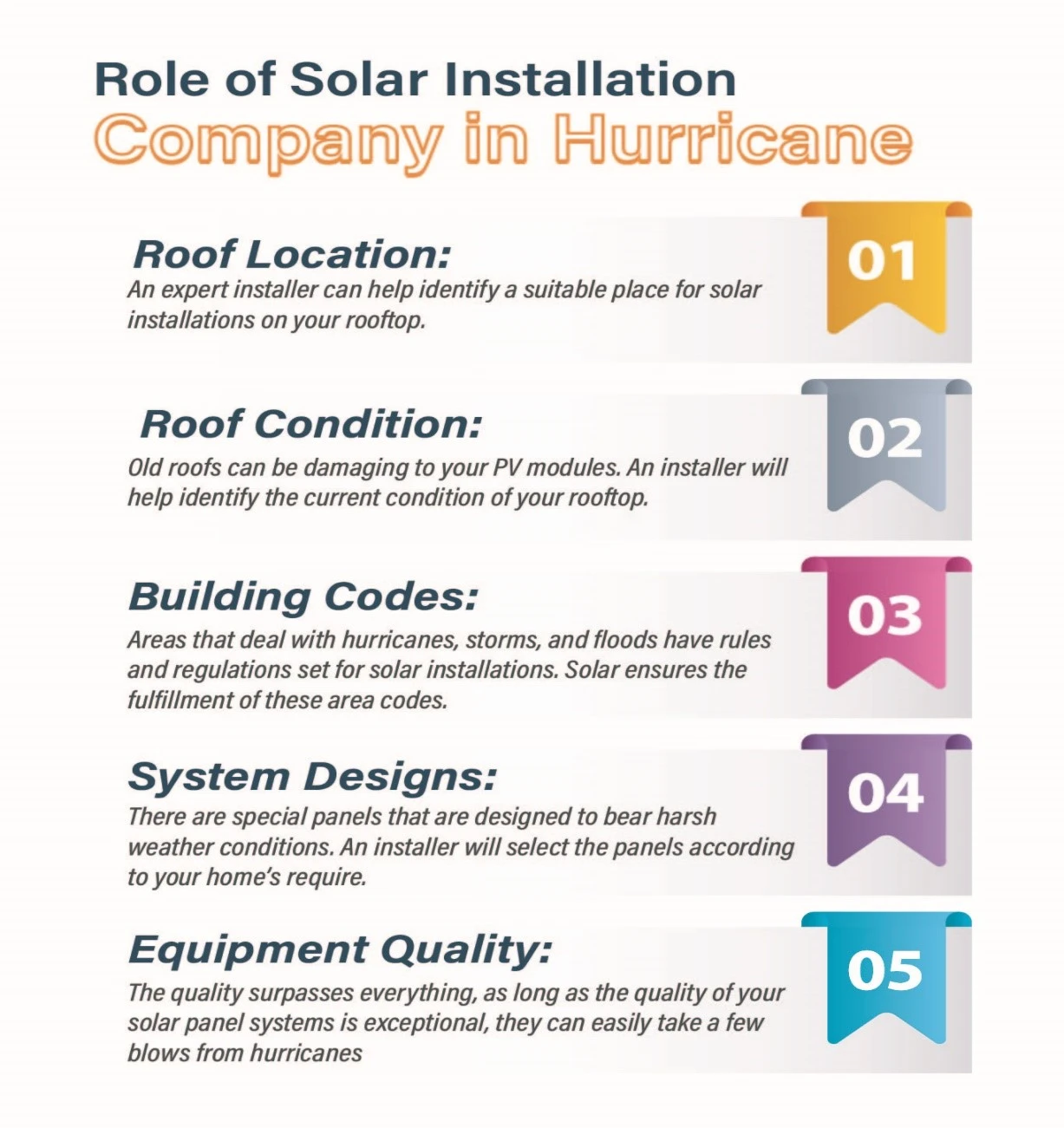
4. System Designs:
There are special panels that can bear harsh weather conditions. The racking system of these modules is quite flexible. The other thing is that these solar systems possess sturdy anchoring systems. With the combinations of these superb designs, it is not quite easy for the high wind velocity of hurricanes to blow these panels out. hence, reducing the impact of hurricanes on solar panels.
5. Equipment Quality:
The quality surpasses everything, as long as the quality of your solar panel systems is exceptional, they can easily take a few blows from hurricanes. The fewer silver lines in your panels, the greater the strength of your solar PV modules. That is the main reason why Thin Films are the most sort after solar panels. The strength of these arrays is exceptional. If you are looking for the best residential panels, Solar SME TANGO solar panels are the best available panels in the US solar market. These panels can withstand harsh weather conditions like high wind velocities, and reduce the impact of hurricanes on solar panels.
What to do when your solar PV module gets damaged by the Hurricane
If your solar panels got damaged from hurricane debris then it is nothing to worry about. Most of the panels are protected under coverage A of homeowner’s insurance policies. Solar systems come under the category of the structural component of the house insurance policy. However, it is best if you can take some pictures of your solar PV modules. In this way, it will be easier for you to file an insurance claim in case of any damage.
Moreover, if you have leased solar panels or bought panels on a power purchase agreement, the damage recovery of these modules is not your headache. These panels’ ownership does not belong to you; it belongs to third-party installer companies. You are just buying the electricity. So, the cost of recovery of any panel damage due to weather calamities will be bear by the company. Most of these damages are offset by their insurance and warranty coverage. So, you don’t need to worry about the impact of hurricanes on solar panels.
What are Some Tips for Homeowners for the Safety of Solar Panels?
Shut down the system: Before the storm hits, disconnect your solar panel system from the power source.
Make sure that the panels are securely anchored to the ground if you have ground-mounted solar panels. If you have rooftop panels, make sure they are securely fastened to the roof, and consider adding additional reinforcements if necessary.
Turn off the inverters: Disconnect all inverters connected to the solar panels. During the storm, this will prevent any power surges or electrical hazards.
Create system documentation: Before the storm hits, take photos of your solar panel system to document any damage.
Examine the system after the storm has passed: After the storm has passed, inspect your solar panel system for any damage or loose connections. If you are unsure, have the system inspected by a professional solar installer or technician.
Contact your insurance company: In case your panels suffer any kind of damage, you need to file a claim about the impact of hurricanes on solar panels with your insurance company.
How to maintain a constant supply of power to your home amid storms?
Although solar panels can withstand hail and hurricanes, this does not guarantee that they will continue to provide power after the storm has passed. When your solar PV module connection is to the grid station and there is a power outage, it will shut down.
Even when the grid is down, solar batteries will provide you with a backup source of electricity. Your solar batteries will help power your home, and your panels will keep adding solar energy to your battery’s power reserves until the restoration of the grid.
Get a FREE Quote for your solar savings if you haven’t gone solar yet with our solar calculator!


